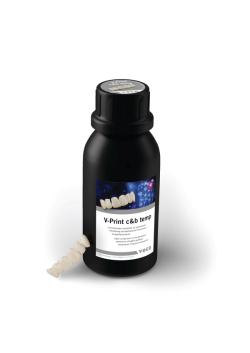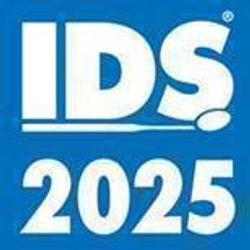- About Us
- Advertise
- Editorial
- Contact Us
- Terms and Conditions
- Privacy Policy
- Do Not Sell My Personal Information
© 2025 MJH Life Sciences™ and Dental Products Report. All rights reserved.
Small Changes, Large Impacts in the Dental Lab
Sometimes a minor adjustment or a simple innovative solution can bring major benefits to your lab.
Change is scary. Change is hard. Change can seem too large to enact—and sometimes it is! But making changes in your lab doesn’t necessarily mean upending everything you know or making enormous investments that put your business in jeopardy. Sometimes, a business-altering change can be as simple as reevaluating the little things.
“I think sometimes we look so far over the horizon to make us better, when really we need to look in our backyard,” Conrad Rensburg, owner and head of the dental implant division for Absolute Dental Services, says “Sometimes, it’s the little things—making sure quality is better, on-time delivery is better, our interactions are better, etc. I think that makes a successful lab rather than some big, new overhaul.”
But what are those “little things” that can make such a big difference? Here are 4 easy adjustments that can bring major benefits to your lab.
Tweak your inventory
Making a change can be as simple as cleaning out the closet. Controlling and consolidating your inventory can save your lab money and streamline your workflow. After all, partially used inventory just collecting dust on a shelf isn’t profitable at all—and neither is using inventory that you aren’t totally pleased with.
“Like any other successful business, inventory management is critical for success,” Mark N. Schwer, chief operating officer of Smart Dentistry Solutions, says. “We’ve noticed a lot of labs getting ‘lost in the cost’ of partially used zirconia discs. Offering multiple zirconia translucencies to accommodate different brands, esthetic, functional and strength needs, and perceived cost savings from cheaper discs are more expensive than you think.”
For example, Schwer says, a high-translucency puck at $70 might seem like a good deal until you calculate the cost of stocking 9 other translucency types for various indications.Now that $70 disc is actually costing you $700 in frozen inventory. Instead, he recommends doing some research and sleuthing other solutions; while it can be intimidating to source new products, keeping an open mind to the benefits those products can offer can save time money.
“I understand the dilemma; when something is working, labs hesitate to switch to new materials (and procedures),” Schwer says. “But staying on top of emerging products and technologies is critical. It’s important that labs work continuously to ensure that their products are aligned with the technologies of today rather than the gold standards of yesterday.”
Stay on top of trends
While a large technological investment may be out of reach (or not a priority) right now, that doesn’t mean you should fall out of the loop. Staying abreast of industry trends positions a lab to be at the forefront of new technologies, materials or procedures as they emerge—giving you the opportunity to be the first to offer cutting-edge services.
“Adopting dental digital workflows and technology has become synonymous with providing the highest standard of care,” Lisa Aguirre, Roland DGA product manager of dental solutions, says. “Across the industry, digital workflows continue to increase while manual workflows continue to decrease. Much of this change is due to the time and cost efficiencies provided by digital workflows; clinicians today expect esthetic, precise-fitting restorations and prosthetics with little or no turnaround time, produced at minimal cost.Meeting the demands of clinicians and their patients requires that labs maximize productivity and provide a wider variety of services in a cost-effective manner.”
In short, labs that stick stubbornly to manual workflows and refuse to entertain digital alternatives—or learn about them—will quickly be left behind.
“Just 13 years after the iPhone was first launched, can you imagine someone saying today they don't need a smart phone because they have a computer at home?” Schwer says. “Technology shifts quickly and labs that fail to stay on top of products and services from digital dentistry trends do so at their own peril. Most advancements happen incrementally over multiple years.”
Understanding the latest and greatest innovations also positions a lab as an educated resource that doctors can turn to for advice. Rensburg thinks this is critical for doctor-lab relationships, because it builds trust and reliance, and lends labs a sort of social currency that they can barter with to make them stand out from the rest.
“I think people see technology as something that is eradicating human interaction but I think it actually increases the importance of human interaction,” he says. “Because now that I understand this technology, I can become an educator by providing doctors with information about materials. And I become a resource. And now you have street credibility because you understand the technology and the materials.”
Strengthen your relationships
Positioning yourself as a resource is only half of the interpersonal-relations battle: You have to be a resource that people want to go to. In the end, the dental lab is in a service industry, and if doctors don’t want to work with you, it won’t matter what level of information or quality you can offer them. This may mean an attitude adjustment.
“I've always said you can look at some of the best technicians the world has ever seen, and those guys have 1- or 2-man labs,” Rensburg says. “Then you can look at average technicians, and they have 100-man labs. You have to ask yourself, what is the differentiator in their success? And the differentiator is human interaction and how you interact with the customer versus how the guy next door interacts. We're all in the service industry, and in this industry if you like somebody, you are 15 times more likely to do business with them again. I think the old-school principles of doing business with integrity and quality are so important.”
And while your relationship with your clients is critical, your relationship with a good relationship with a sales rep can be just as beneficial. Not only can a sales rep potentially connect you with clients, they can help you streamline your workflow and find solutions for pain points.
“Just be honest with your sales reps,” Schwer says. “They are here to help you, not to waste your time. Don't hesitate to tell the truth when things aren’t working out. Sometimes a sales rep can fix a problem you thought to be unfixable. Honesty always brings clarity to uncomfortable situations. We want to improve outcomes and support our lab customer’s needs.”
Lab owners shouldn’t just look externally when improving relations: A successful lab starts at home. Ensuring your employees and technicians are treated well and feel valued will lead to increased productivity and better outcomes.
“I think company culture is one of the biggest efficiency drivers in the lab today,” Rensburg says. “You need to define your company culture and get buy-in from people.”
Having a strong company culture leads to employee retention and higher employee satisfaction. Open communication is a great first step in building a strong company culture, as it increases transparency and makes employees feel like they are part of a team. But creating culture isn’t a one-time deal; it needs to be nurtured, and lab owners should stay involved with their teams.
“Culture can be destroyed much quicker than it can be created,” Rensburg says. “It can take years to build. If someone starts stirring the pot, you can immediately see people’s attitudes change and that needs to be addressed. Define your company culture and then follow what you have laid out—and stay committed to it.”
Get the most from your digital solutions
It’s no secret the dental industry is going digital, and labs need to be a part of this technological transition. With new advances emerging every day, it’s important to know how you can get the most out of your digital solutions and lay the groundwork for the next iteration.
“Incorporating digital dental workflows and technology is an essential part of how dental laboratories are adapting to the ever-changing world of dentistry as well as the increased demands and expectations of clinicians today,” Aguirre says. “Digital dental workflows provide affordable, precise, and predictable outcomes with minimal turnaround times.
While most labs have incorporated some form of digital workflow, there are many that are slow to adopt. However, embracing technology like digital dentures or 3D printing can alter a lab’s entire future.
“Diversity your offerings through digital dentistry as much as you can—the digital trend is undeniable,” Schwer says. “CAD/CAM equipment and related materials offer huge potential for growth to any laboratory. In particular, milling your own restorations offers benefits of speed, profitability, and artistic expression to name a few. In general, labs should educate themselves in various topics of digital dentistry to see what works for them.”
And education is key. Whether your lab has invested in a high-quality digital milling device or is integrating a 3D printer and imaging technology, you need to make sure you are using it to its full potential.
“Training and understanding technology are critical,” Rensburg says. “You can buy the technology—and I see so many labs have digital scanners and 3Shape software and all these things—but they don't understand how to use them. They don't make it their own.”
So, while investing in new technology could be a big change, utilizing your existing technology to its full potential is a small adjustment that can make a huge difference in productivity. Proper training, innovative thinking, and a dedication to education can increase a technology’s benefit immensely—and it all starts with the lab leaders.
“It’s about training yourself,” Rensburg says. “It's the owner and the manager’s duties to understand the medium or technology they’re working in so they are able to train their team. I think understanding technology—educating yourself and then educating your team—is probably the most important thing. Buying technology doesn’t make a difference if you don’t understand it fully; you have to master it. You’ve got to go through the frustration to get yourself to the point where the technology starts to make sense.”



